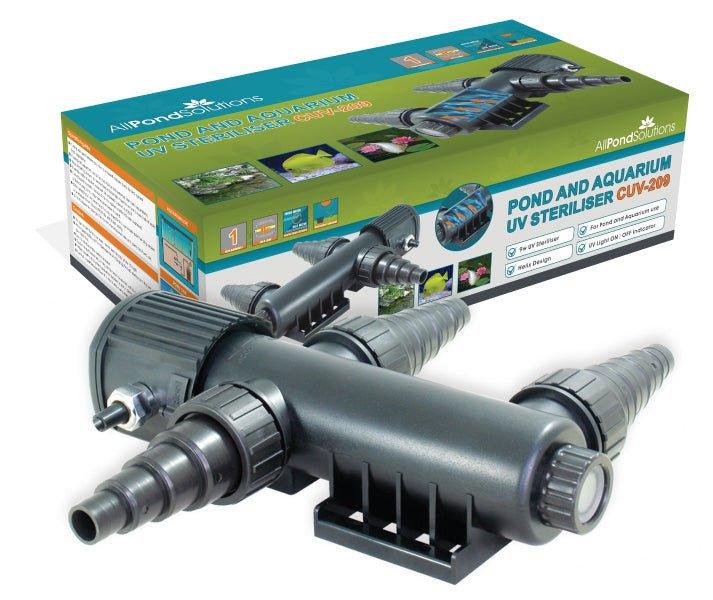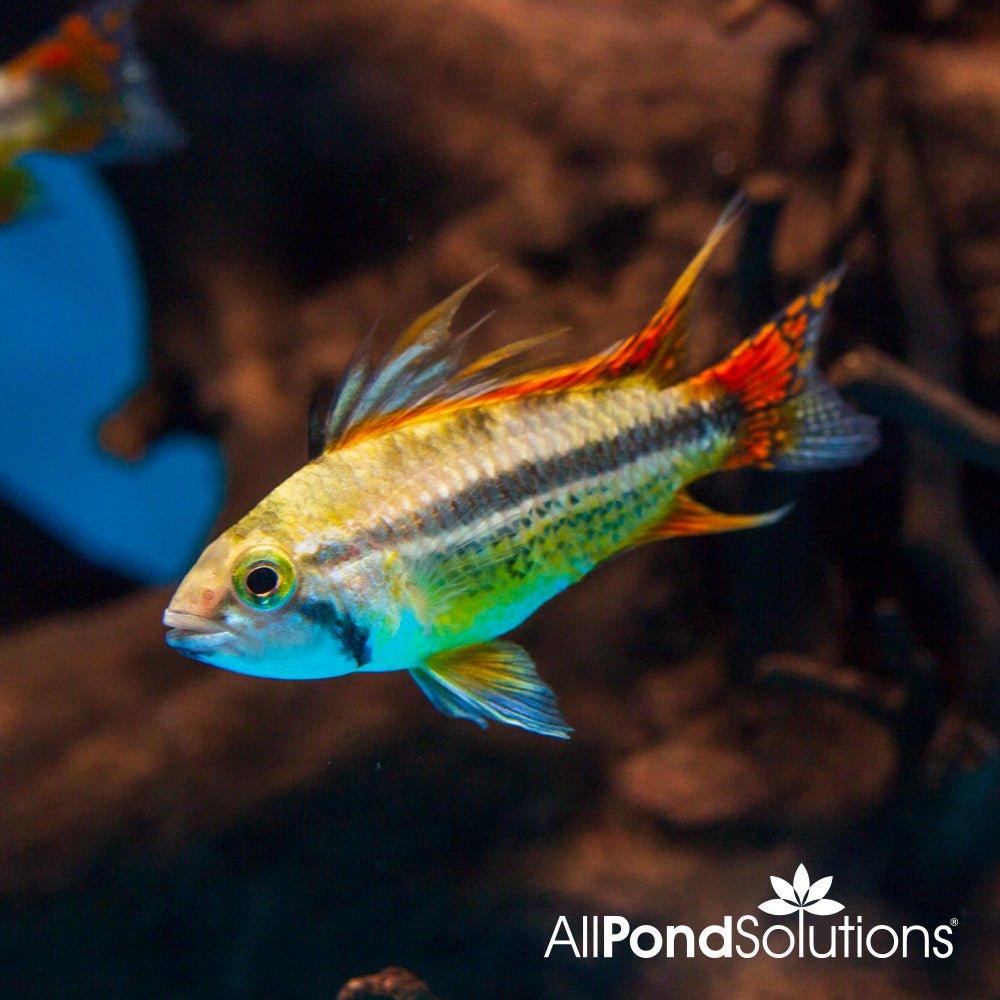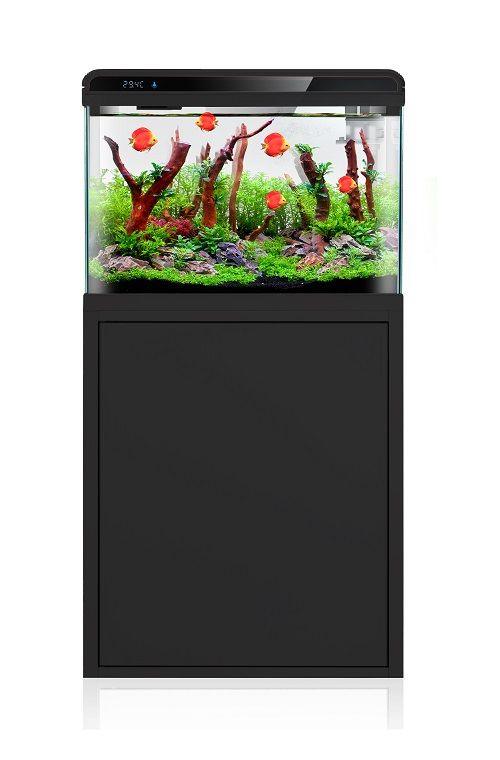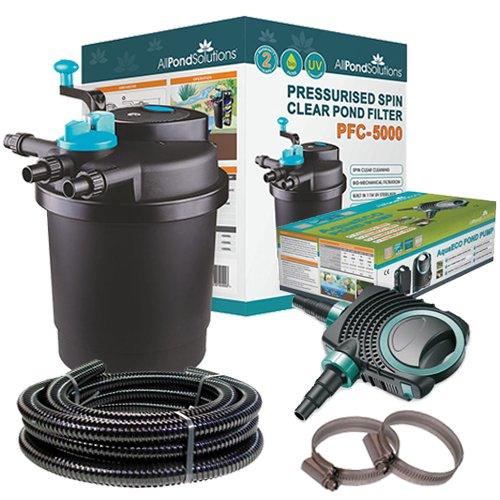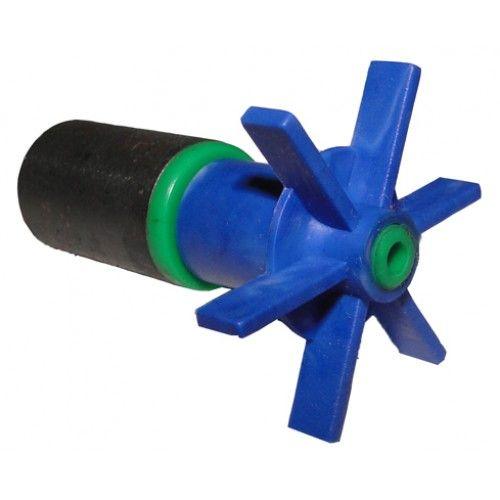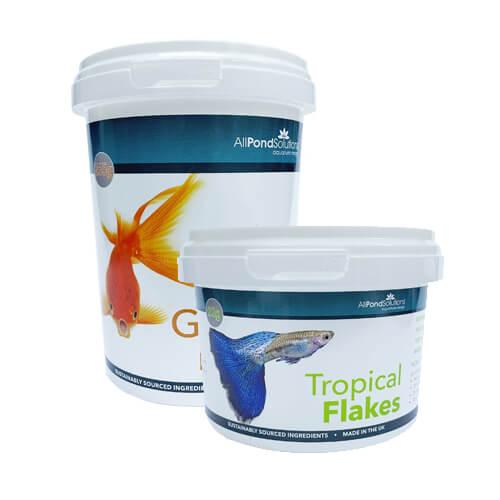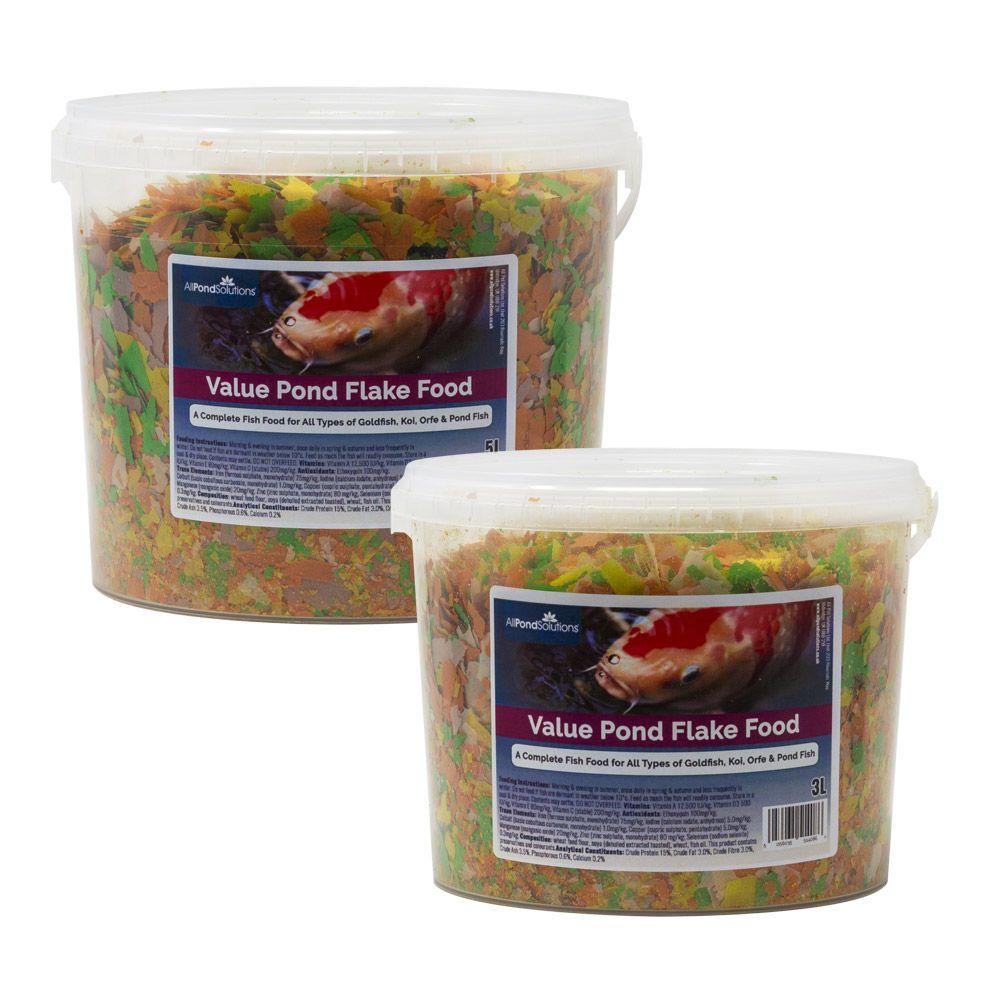The Cockatoo Cilchlid (Apistogramma cacatuoides) is also known as the Cockatoo Dwarf Cilchlid.
Scientific Name:
Apistogramma cacatuoides
Approximate Purchase Size:
2-4cm
All Pond Solutions will always endeavor to supply as close to the approximate size range as possible.  Due to variations from suppliers on rare occasions, this may not always be possible. 
How easy are these to care for?
The genus Apistogramma is one for the more advanced hobbyists. They are bottom-orientated which means that the footprint of your tank is more important than the water capacity. They prefer a long tank over a high one kitted out with gravel/sand, caves, some java moss and epiphytic plants for example.  Their aquarium should contain soft acidic water that has been allowed to mature before these fish are added. Regular partial water changes are very important for the well-being of the Cockatoo Cichlid.
How large can they grow?
Up to 8cm
Where in the world are they from?
Originally, they are found in Peru, Columbia, and Brazil in both clear and white water. They were first imported to the US in the early 1950’s and now be found available for hobbyists across the world.
What is the ideal number to keep together?
Ideally, keep them in a pair or in large aquaria with one male and several females.
What water conditions do they require?
The water temperature should be between 24 - 27 °C and a pH range of 5.5 - 7.0.
What should you feed them?
Flakes, micropellets, small frozen food, daphnia, and brine shrimp.
How compatible are they with other fish?
This species is generally peaceful but can become territorial when breeding. They are highly compatible with catfish, small tetras and pencil fish.
Can they breed in captivity?
Breeding in captivity can be successful although it is difficult. The water needs to be very soft and acidic with a temperature of 29 °C. Female fish need suitable spaces for spawning, hence the need for caves and places for them to hide. Eggs should hatch after 3-4 days and the fry will require small but frequent feeds such as baby shrimp. You should feed your other fish at the opposite end of the tank to allow the fry the chance to eat. 
